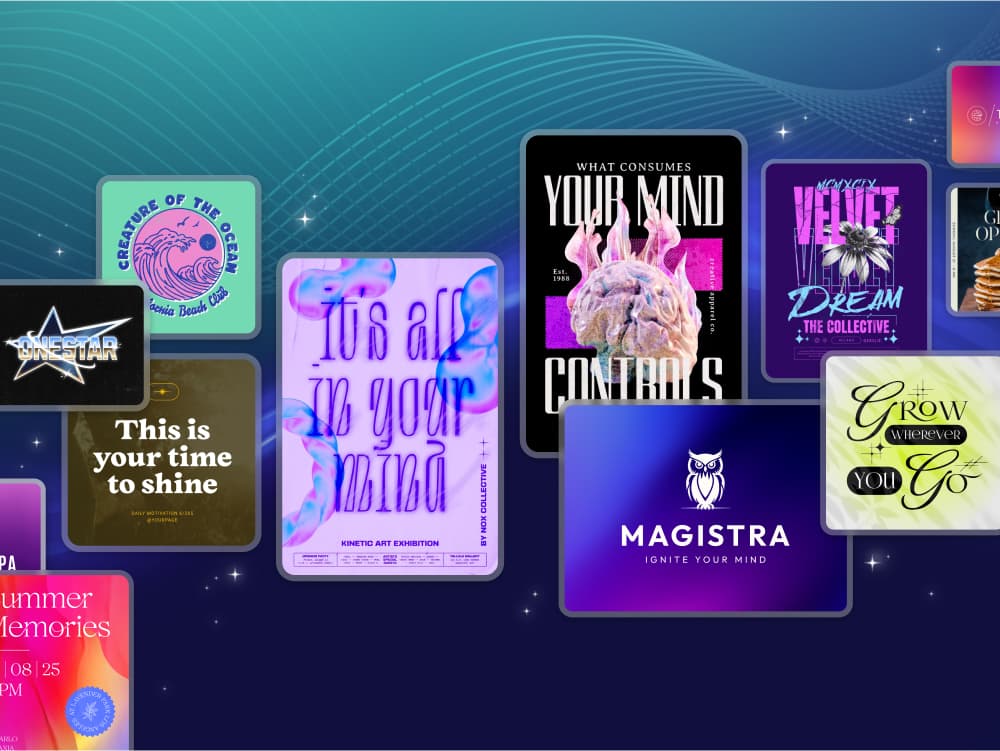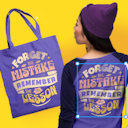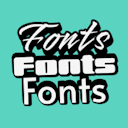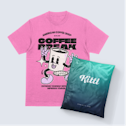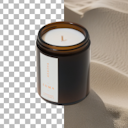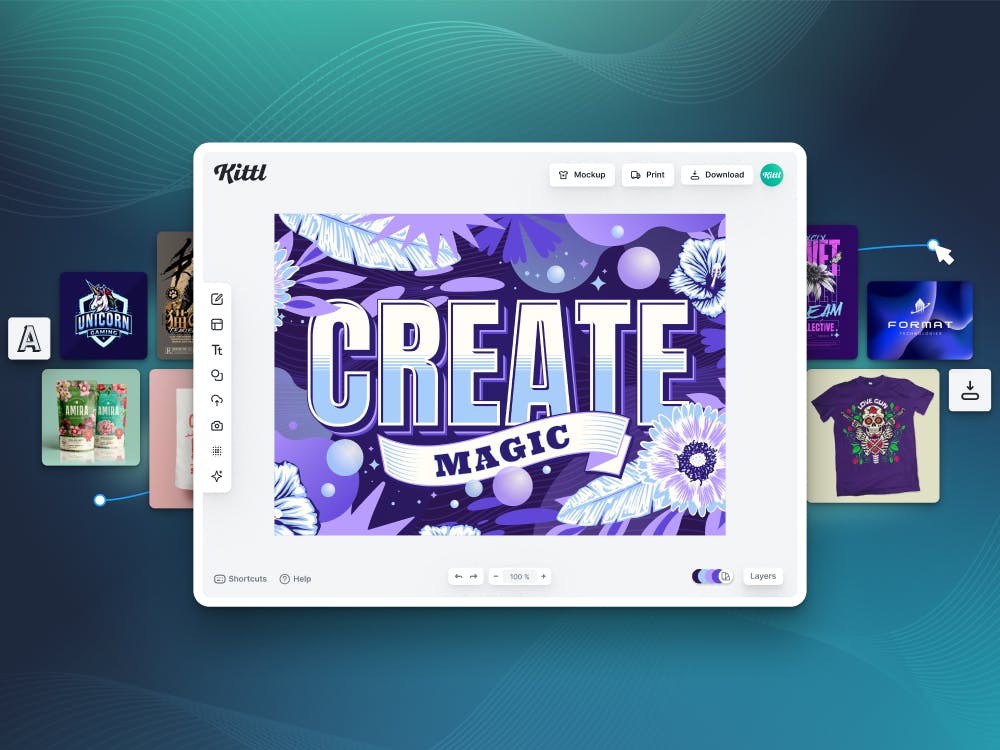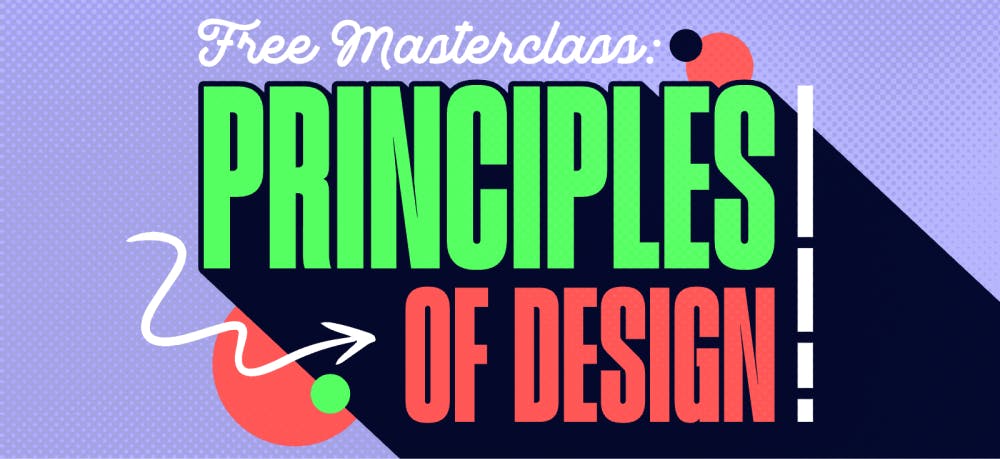Templates
Tools
Learn
Company
Home
Blog
Vintage
The Ultimate Guide to Mastering Vintage Design
The Ultimate Guide to Mastering Vintage Design
It's been weeks, yet you haven't achieved a vintage-styled design look you love. At best, your designs have been average. All these make you wonder, “when will I get better?”
Trust me, you will.
I know this because I was once like you, a stuck vintage design enthusiast with no efficient tool to achieve my desired design outcomes. And worse, I didn't have a design-specific community to inspire me.
Thankfully, I'm in a better place and even went on to co-build, not just a solution - Kittl, but a hub that brings efficient design software and community under one roof:

In this ultimate guide, I'll walk you through how I (and others in the feed above) are creating stunning vintage designs.
But before that…
Difference Between Retro and Vintage
Although retro and vintage are often used interchangeably, they don’t mean the same thing, especially when you consider their earliest meanings.
Originally, vintage referred to designs produced in the past, while retro meant modern designs replicating these older designs. So retro was just another way to say a design is vintage-inspired.
However, the distinction between vintage and retro has become so fluid, they are now used to describe the different eras emulated in designs for nostalgic effect.
Curious about the types of vintage you can evoke in your next design?
Types of Vintage Design
Art Deco
Popular in the 1920s and 1930s for making architecture and design more modern, Art Deco designs are known for their idealized human figures. They also come in geometric shapes with symmetrical patterns:
Art Nouveau
Art Nouveau is distinguished by its flowery details and curved lines as natural beauty is its core. When designing an Art Nouveau design, use contrasting colors, ornate patterns, young women, plants, and trees:
Vintage Badges
Vintage Badges take you back to days when designers used carved wood and rubber to create graphic images, reminding viewers of the late 19th or early 20th century.
You don't have to stress about creating Vintage Badges as Kittl already has pre-made templates you can use.
All it takes is a few clicks:
Letterpress
Although invented in the 15th century, Letterpress designs remain attractive even today. Its slightly embossed effect accounts for that attraction.
Letterhead designs are simple as they require a few palettes and fonts. They are even simpler to create when you use Kittl, which has Letterhead design templates that you can customize in seconds:

Mid-Century Modern
Mid-Century Modern designs aim to paint the trendy aspects of the mid-20th century and reinterpret Art Nouveau. They have clear lines with nicely curved objects and wood tones.
Carrie Cousins, Designer at Design Shack, summarizes Mid-Century Modern succinctly.
Hear this from her:
Mid-century modern is often colorful and bold. Shapes and space are often wide, asymmetrical and even aloof in style and structure. Typography is often on the simple side with block sans serifs, simple serifs and plenty of all-caps fonts.
”Of all the vintage designs, Mid-Century Modern is the most popular. It's so viral, experts like Laura Fenton had to question "why the world is obsessed with midcentury modern design."
Similar to the other designs, you can find usable mid-century modern templates on Kittl:
Swiss Style
Also known as International Typographic Style, Swiss Style is a bold and unpretentious design developed in the first half of the 20th century. It comes with heavy block letters overlaid on each other and against solid backgrounds, giving it a 3D feel.
Again, you don't have to worry about ideating a Swiss Style design from scratch as there are authentic, professionally-made options to choose from on Kittl:
Vaporwave
Vaporwave emerged in the early 2010s and has since come to stay. It incorporates pixel art, pixelated text, color schemes reminiscent of the 1980s elevator music era, and images you might see in a video game.
Vaporwave is the most retro out of the vintage designs listed so far. Explore its retrofuturism with Kittl:
Now that you've seen the different types of vintage designs, let's discuss the process of creating them.
How to Create Beautiful Vintage Designs
1. Choose A Suitable Color Palette
Do you want to evoke the Art Nouveau or Swiss Style era?
Whatever option you choose, check out the actual designs from that period to see what color palette was commonly used. This will help you select a befitting background color.
![[Art Nouveau colors with hex codes]](https://cdnp.kittl.com/75552b88-d06b-478b-af70-e12198b7fe9d_4112476bc2452bc9ac03f6ea606e71c7.jpg?auto=compress,format)
If none of the color combinations from a particular era fits your client's branding, find a more suitable one and determine how to fit them into your selected vintage design set.
2. Select An Appropriate Font
In addition to choosing a color, select a font from the era you want to highlight in your design.
Mere assumption, however, won't do much here. Instead, research fonts used in real designs from your preferred era. For example, if you’re trying to create an Art Deco, check out this article highlighting 48 Beautiful Art Deco Fonts.
Watch this YouTube tutorial to learn how to pair fonts together.
Once you decide your font(s), move to the next step…
3. Construct Your Design
There is no one-size-fits-all approach to making a design look as different eras require different approaches.
So before you open your design software, study the design methods appropriate for the era you're trying to replicate. For instance, if you're designing a Mid-Century Modern look, you shouldn't use 3D graphics and high-res imagery. Instead, use simple geometric shapes, Sans Serif, and wood tones.

Once you've identified the era-appropriate design method, carefully combine the previously selected elements to create your first few rough drafts.
4. Step Away From the Design
Once you've created the first drafts of your design, take a break from it to relax your creative muscles. This is the hardest part of the vintage design process, yet necessary to achieve your desired look.
After a short break (whether that means a few hours or days) get back to designing. By this time, you'll be calm and creative enough to identify your design's flaws quickly. Afterward…
5. Seek Feedback
Don't keep your vintage designs to yourself. Show your friends, family, and colleagues and request their feedback. Then, reiterate based on the opinions you get. For better results, seek feedback from a community of fellow designers by sending out surveys as they're in a better position to correct, direct and inspire you.
Soon, I'll show you how Kittl brings that community to you.
6. Create a Final Draft
You've designed and redesigned based on feedback. Now, it's time to show your client (or the world) your vintage look. Community also comes in here as you'll be better supported and motivated to keep going if you have other designers cheering your designs.
Hold on.
These processes, particularly the first three, sound stressful, don't they?
They are!
And I say that assuredly because I passed through them during my time as an independent artist.
Fortunately, I discovered creating vintage designs can be easier with the right tool. This is why I joined forces with Nicolas to co-found Heritage, which is now Kittl.
Vintage Design Made Easy With Kittl
I might not know you closely, but I can confidently predict two things about you.
First, you already have a design tool you use. However, that tool hasn't been efficient in helping you navigate vintage design creation as it is:
- Too basic,
- Excessively complicated, or
- Just undeniably expensive.
Second, you long to meet designers with similar interests, but that has been a struggle as the vintage design space isn't as populated as fields like UX.
Correct?
Well, Kittl aims to solve both problems.
With tons of pre-made templates and a user-friendly interface, Kittl has a shallow learning curve compared to tools like Illustrator.
You don't have to spend precious hours looking for color palettes or fonts suitable for the era you're highlighting. Simply type the era you want to evoke, and you get to see ready-made templates:

What's more?
Each of these templates is 100% free to use.
Once you select a template, customizing it to your preferred choice is easy peasy:

Say you're stuck, you can quickly get inspiration and encouragement from our social-like newsfeed where other vintage designers and enthusiasts hang out and post their designs:

As if that's not enough, you can invite your designer friends to the Kittl and get rewarded for it:

Choosing Kittl means choosing a product that doubles as a design tool and hub. You can now design better vintage visuals without feeling isolated in your journey.
Just like Toni Schreirer:

Grow Your Vintage Design Career With Kittl
Ralph Waldo Emerson once said:
Every artist was first an amateur.
”I agree with him, and I'm sure you do too.
Even though you're not yet expert at creating vintage designs, you recognize how much progress you've made since you began practicing.
And if you haven't begun practicing at all, it's not too late. With the steps highlighted in this guide, you'll be able to confidently handle vintage design projects. Add Kittl to the mix, and you look like a design genius even if you’re not:

Wanna see how Kittl can make you a vintage design genius?
